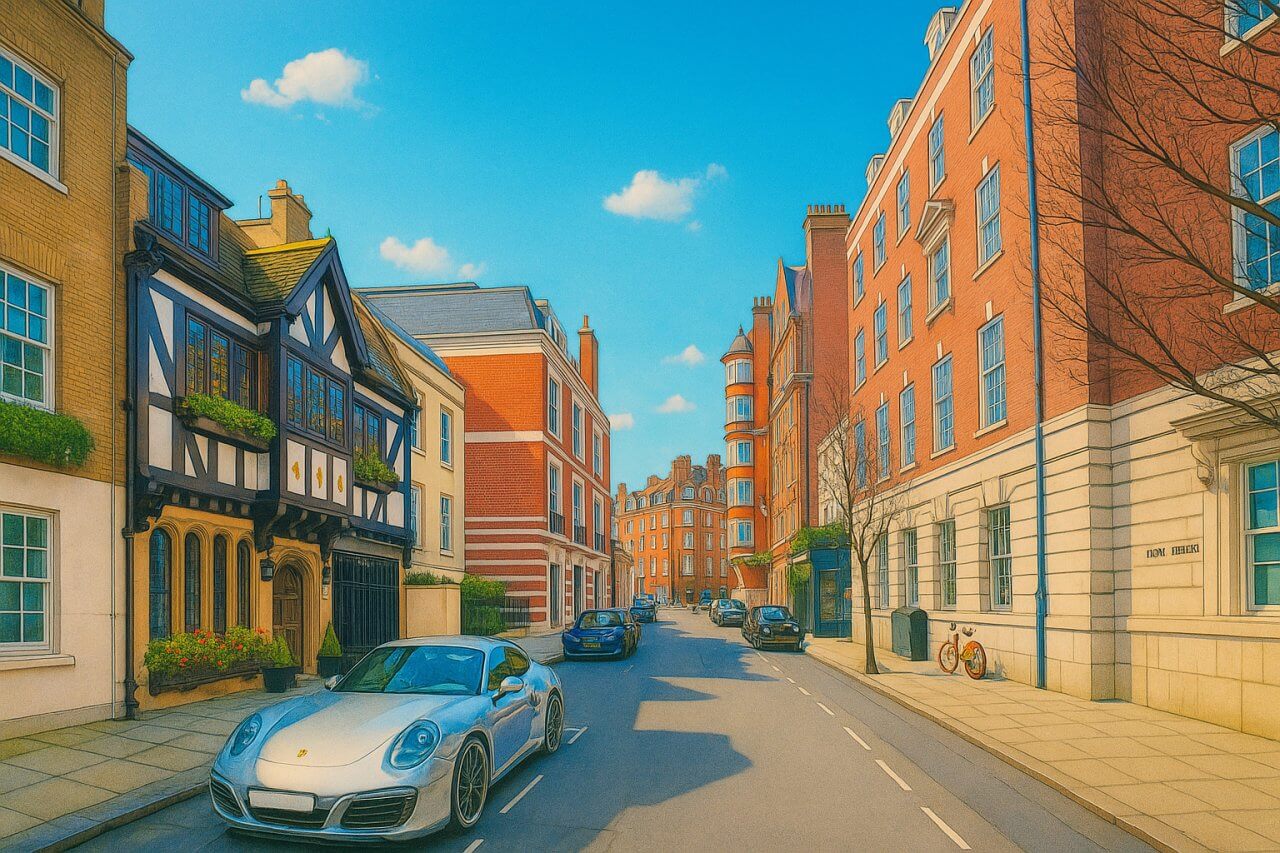
Farm Street, London
Farm Street is a short but historically significant street nestled in the heart of Mayfair, within the prestigious City of Westminster, London. It stretches from South Street in the west to a junction with Hill Street and Hay’s Mews to the east, threading its way through a neighbourhood known for aristocratic townhouses, embassies, and elite clubs. Despite its compact length, Farm Street is notable for its elegant architecture, religious importance, and desirable property market.
Location and Surrounding Streets
Farm Street is a quiet, one-way road tucked between major residential and commercial arteries of Mayfair. On the west end, it connects with South Street while on the east end, it meets Hill Street and the quaint Hay's Mews, known for mews houses and quiet charm. To the south lie Charles Street while to the east Berkeley Square. Curzon Street and Park Lane are nearby to the south, forming a classic Mayfair grid.
The surrounding area is characterized by cobbled lanes, Georgian facades, and leafy squares. Although discreet and low-traffic, Farm Street is steps from some of London’s most exclusive addresses and institutions.
History of Farm Street
The development of Farm Street dates back to the mid-18th century, part of the broader urbanisation of Mayfair by the Grosvenor Estate. Its rural name harks back to the period before Mayfair’s transformation from countryside to high-society residential enclave. The name “Farm Street” likely originates from the fact that this portion of the Grosvenor lands was once agricultural before the grand building spree of the Georgian era.
By the Victorian period, Farm Street had gained prominence with the establishment of Jesuit institutions and high-end residences, solidifying its place in central Westminster's elite framework.
Key Sights and Notable Buildings
Farm Street Church (Church of the Immaculate Conception)
One of the most significant landmarks on Farm Street is the Church of the Immaculate Conception, often referred to simply as Farm Street Church. Built in 1849, it is one of the most prominent Jesuit churches in the UK. The Gothic Revival structure, with intricate stained glass and pointed arches, remains an active Catholic church and a centre for Jesuit ministry in London. Its literary and spiritual heritage has drawn notable figures such as Evelyn Waugh and Graham Greene.
Residential Architecture
Farm Street features classic Georgian and Victorian-style facades, interspersed with 20th-century refurbishments that respect the conservation area’s heritage. The rear façades of some houses on South Street and Hill Street back onto Farm Street mews or gardens, giving the area a private, exclusive atmosphere.
Real Estate on Farm Street
Property on Farm Street is among the most exclusive in London. As of May 2025, the average price for a three-bedroom flat or townhouse on the street stands at around £7.5 million. For context, that equates to roughly £3,500 per square foot (£37,700 per square metre). Homes range from compact mews-style dwellings at about 1,200 sq ft (111 sq m) to expansive family houses over 3,500 sq ft (325 sq m).
This places Farm Street well above the London average, which was approximately £780,000 across all property types in 20251.
Nearest London Underground Stations
Farm Street is conveniently situated near several London Underground stations:
- Green Park Station – served by the Jubilee Line, Piccadilly Line, and Victoria Line (approx. 6-minute walk)
- Bond Street Station – served by the Jubilee Line and Central Line (approx. 10-minute walk)
- Oxford Circus Station – served by the Bakerloo Line, Central Line, and Victoria Line (approx. 12-minute walk)
These stations provide fast access to key London destinations including the West End, Canary Wharf, and Heathrow Airport.
Nearby Bus Stops
Several Transport for London bus routes run near Farm Street. The closest stops are on Park Lane, Curzon Street, and Piccadilly. Routes 2, 6, 13, 14, 23, and 38 serve the area, offering connections to Oxford Circus, Trafalgar Square, Victoria, and beyond.
Fun Fact
Farm Street’s church has long been associated with literary London. The Jesuit priests who served there offered counsel to a range of famous British writers, most notably Evelyn Waugh, who was received into the Catholic Church at Farm Street in 1930.
Quick Facts
- Location: Mayfair, City of Westminster, London
- Connected Streets: South Street (west), Hill Street and Hay’s Mews (east)
- Historic Landmark: Farm Street Church, built in 1849
- Style: Georgian and Victorian residential buildings
- Average Property Price (2025): £7.5 million (~£3,500 per sq ft)
- Nearest Underground Stations: Green Park, Bond Street, Oxford Circus
- Nearby Bus Routes: 2, 6, 13, 14, 23, 38
- Fun Fact: Writer Evelyn Waugh was received into the Catholic Church here
References
Map of Farm Street, London
 Painting of Farm Street, London
Painting of Farm Street, London